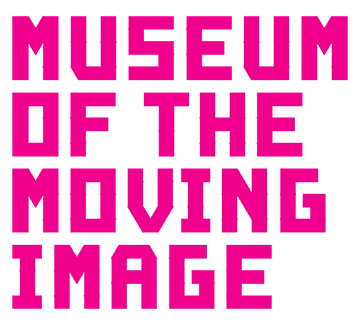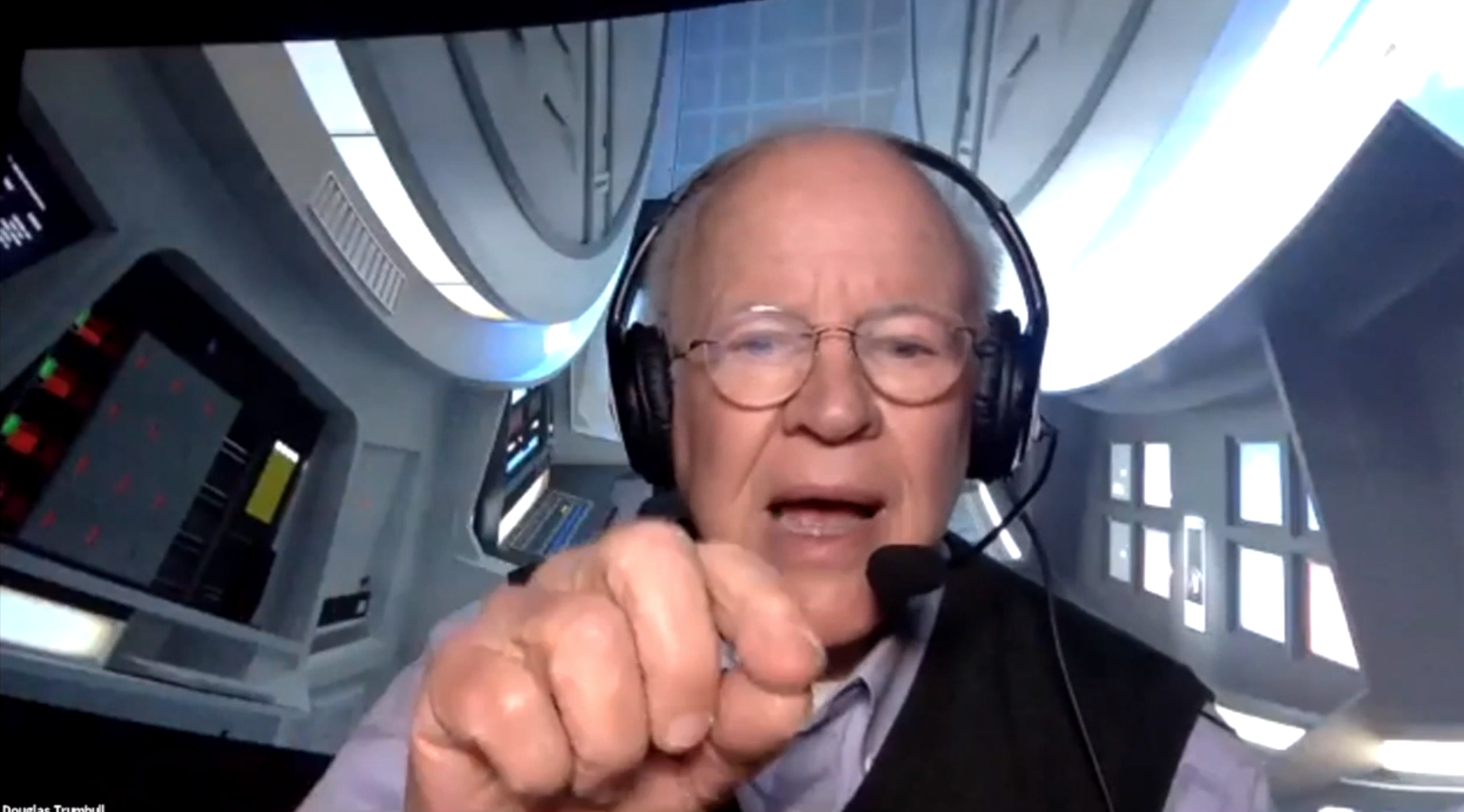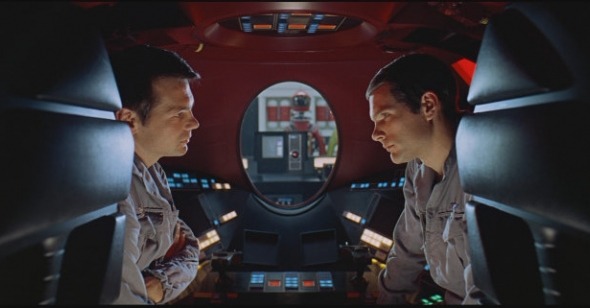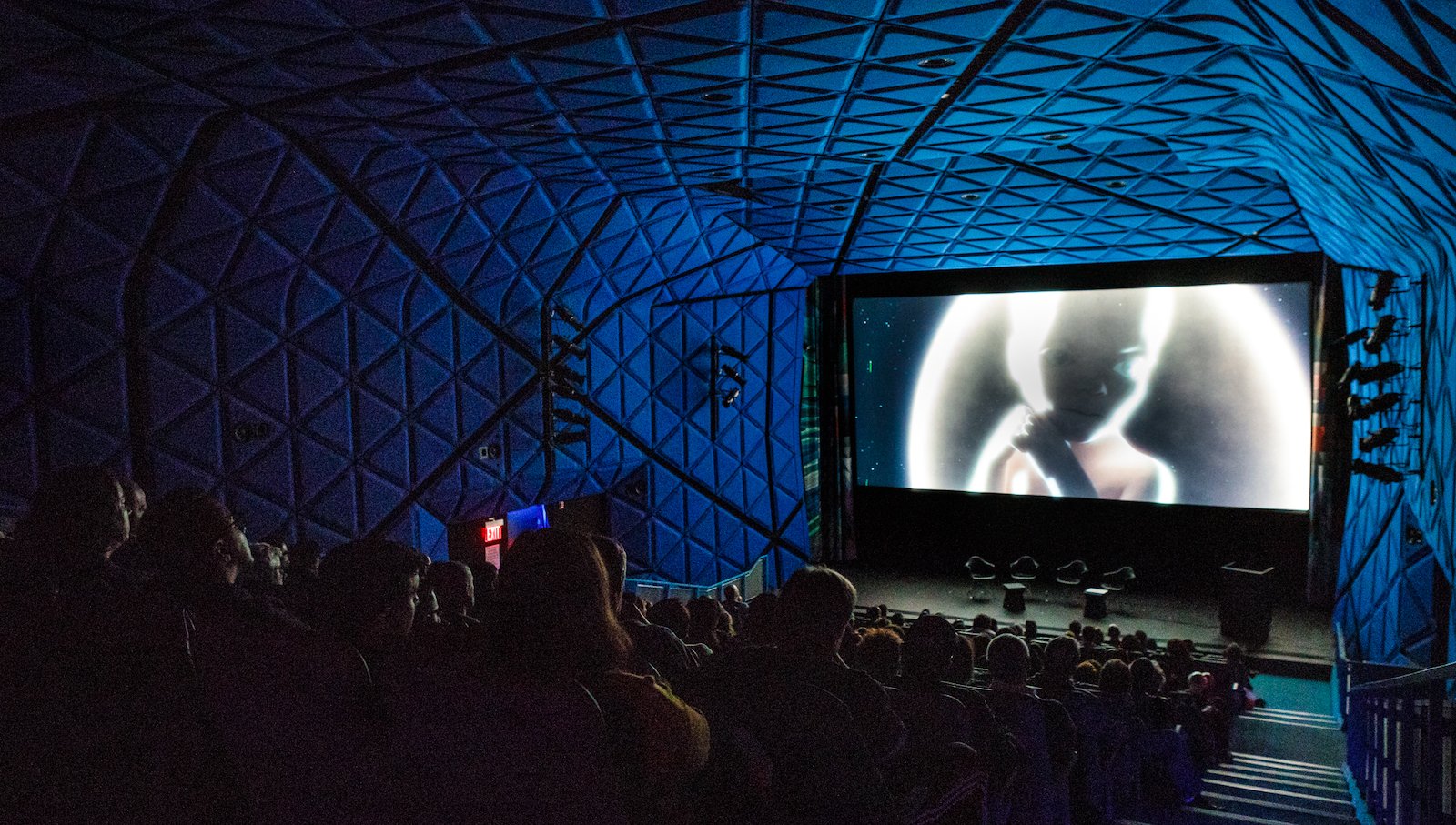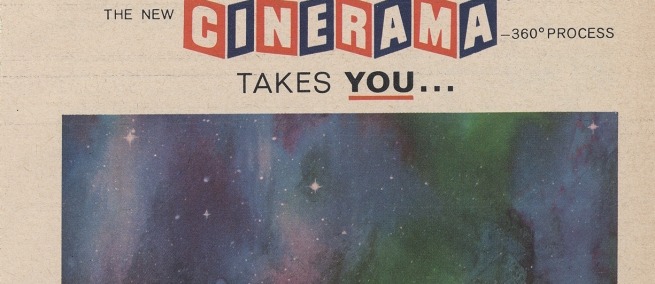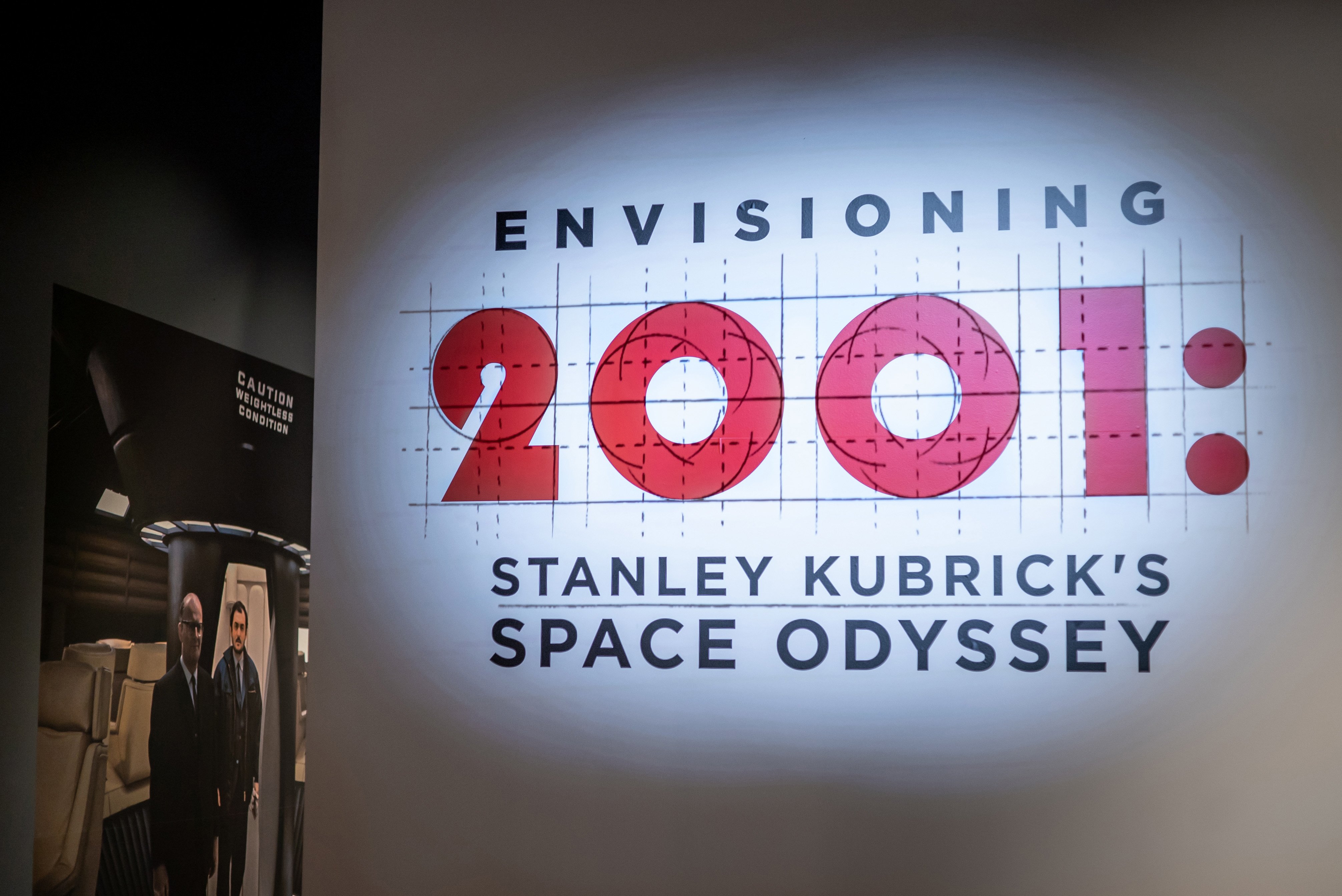Creating 2001: A Space Odyssey
Among the most visionary films ever made, 2001: A Space Odyssey (1968) would be an essential touchstone for any institution devoted in part to the craft and history of film. Yet Stanley Kubrick’s science-fiction masterpiece—which envisioned a realistic, highly detailed future for human space travel; imagined a cautionary tale about our reliance upon rapidly advancing technologies; and at the same time offered an abstracted, ambiguous narrative about the spiritual paths for all sentient beings that’s still discussed and puzzled over in the 21st century—has particular meaning for Museum of the Moving Image. Not only has the film become a centerpiece of the offerings in our theater and was the subject of a major temporary exhibition in our galleries, the film’s modernist look was a key inspiration for our building’s architect, Thomas Leeser. This was especially true for the spaceship-like interior of the Sumner Redstone Theater, where we frequently show 2001 in the thrillingly large 70mm film format.
In close collaboration with science-fiction novelist Arthur C. Clarke, Kubrick brought an unprecedented depth and formal radicalism to the genre, creating images of technical complexity and metaphysical depth that remain lodged in the cultural consciousness. Yet the ambition of the film’s labored production and unorthodox conceptual process made its eventual classic status anything but a sure thing. In this MoMI Story, read more about the making and reception of the film, which was celebrated in the Museum exhibition Envisioning 2001: Stanley Kubrick’s Space Odyssey.
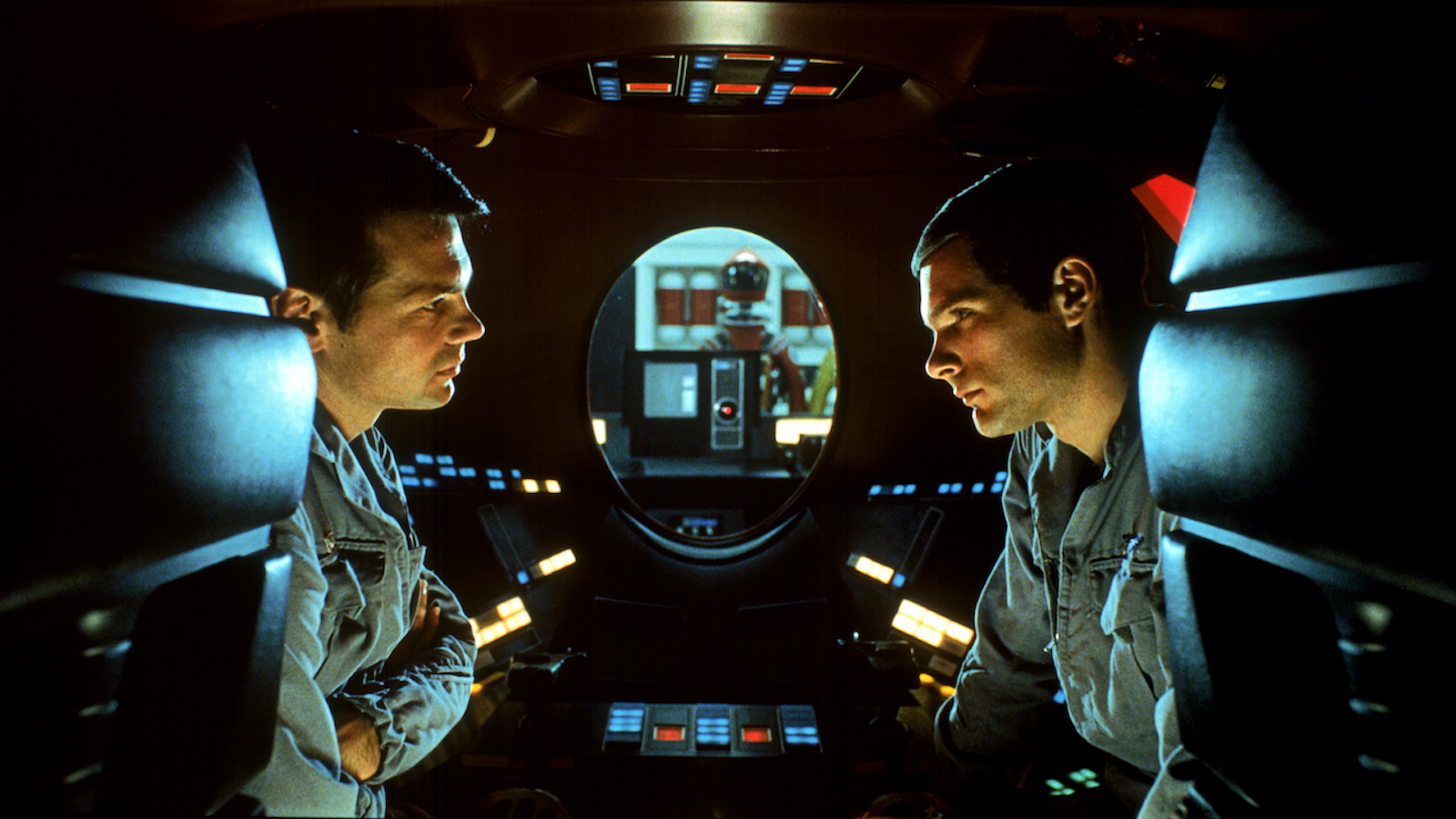
By the time he began conceiving 2001: A Space Odyssey, New York–born and bred photographer turned director Stanley Kubrick had established himself as one of the most important voices in American cinema with 1964’s Dr. Strangelove: Or How I Learned to Stop Worrying and Love the Bomb, a scabrous, absurdist comedy that dared to poke fun at humankind’s seeming full-throttle race toward nuclear apocalypse. Though he had directed such acclaimed films as the smaller-scale noirs Killer’s Kiss (1955) and The Killing (1956); the antiwar courtroom drama Paths of Glory (1957); and 1962’s controversial film adaptation of Nabokov’s Lolita (evidence that Kubrick was willing to bring the “unthinkable” to the big screen), Dr. Strangelove, with its four Oscar nominations, including Best Picture and Director, was evidence of a bold, philosophical approach to filmmaking that indicated darker, even grander avenues: it was a portrait of man’s grand folly—the capacity for “human error” (to anticipate one of HAL 9000’s most memorable lines) begetting nothing less than our own mass extinction.
While the project that became 2001 would perhaps be more hopeful than his previous film, there is an inherent cynicism about the human condition, evident in all of his subsequent movies, that partly fuels such a radical, dark vision. As much as the specter of nuclear apocalypse, the space race had been on the minds of many Americans in the late fifties and sixties, and Kubrick was interested in producing a more realistic and ambitious science-fiction film than what he had previously seen. The film’s speculations about extraterrestrial life and artificial intelligence would be more intellectually engaged than those of other directors, forgoing the usual clunky, tactile effects for something more ethereal and undefinable, a way of dramatizing the unknowable.
To help him start working out his ideas, he wrote an introductory letter to science fiction writer Arthur C. Clarke in March 1964 suggesting they collaborate on a movie about space travel and extraterrestrial life. Clarke believed that his 1948 story “The Sentinel” was a good starting point for discussion with Kubrick, and soon the two were working together in New York, where Clarke had traveled from his home in Sri Lanka. After years of intense discussions and story shaping, Clarke would write a novel concurrently with Kubrick’s film going into production, with both being released the same year.
Soon after they began their collaboration officially, Clarke introduced Kubrick to Harry Lange and Fred Ordway, former NASA officials who had recently left to open a consulting firm; both would end up central figures to the film: Lange as production designer and Ordway as a primary conduit to the latest in industrial space research. Other important early collaborators included the company Graphic Films, which Kubrick commissioned in summer 1965 to provide concept art for the moon landing sequences and moon base structures after seeing their movie To the Moon and Beyond at the 1964-65 New York World’s Fair. Graphic Films’ Con Pederson and Douglas Trumbull, who would eventually come on board, along with Wally Veevers and Tom Howard, as special effects supervisors for 2001. (Read “Graphic Films and the Inception of 2001: A Space Odyssey” on Sloan Science & Film.) Once he had moved to England to shoot the film, the crew expanded over the next three years to include such essential players as Geoffrey Unsworth as director of photography, who would shoot on 70mm film; fashion designer Hardy Amies, who would create the streamlined, modernist costumes; and Ray Lovejoy as editor (though Kubrick had a heavy hand in the edit himself).
Kubrick would ultimately shoot 2001: A Space Odyssey in England, at MGM-British Studios in Borehamwood and also at Shepperton Studios in Surrey. The filmmaker and studio originally aimed for a 1966 release date, though the production became so massive and unwieldy that everyone on crew and at MGM assumed that date would have to be significantly pushed. It was also a film that, thanks partly to its episodic structure and conceptual complexity, was being regularly sorted out and reimagined during the production process. The shape that Kubrick and Clarke’s film finally took was the result of much work and imagination and constant reshifting of ambitions and expectations. 2001 moves from the epochal “Dawn of Man'' sequence, in which a group of hominids, led by the ape Moonwatcher (performed by actor and mime Dan Richter), discover violent weaponry and thus how to assume power, to another wordless passage expressing the mundaneness of future space travel, set to Strauss’s “The Blue Danube.” Soon the film jumps to its first set of characters, including Heywood Floyd, a doctor of astronautics investigating a top-secret discovery of a strange object that seems to have been “deliberately buried” in a lunar crater on the Moon. These first two sequences are united by the presence of a monolith—an unsettlingly smooth, geometric object poking out of the earth—which emits a strange, high-pitched frequency and seems to act as a harbinger.
2001’s central metaphorical image, the monolith will recur throughout the film, but first Kubrick and Clarke make another radical detour. In the most plot-driven section, we meet Dave Bowman (Keir Dullea) and Frank Poole (Gary Lockwood), astronauts on a mission to Jupiter aboard the nuclear-powered U.S. spacecraft Discovery One, a dynamically designed spacecraft that creates gravity by slow rotation. The enormous centrifuge set—which cost $750,000—moved in a circular motion at three miles an hour, resulting in some of the film’s most arresting images (such as Poole jogging around the ship as though a hamster in a wheel). Though three other astronauts are onboard, put into hypersleep for the duration of the mission, the Discovery, of course, has one more crucial crew-member: the sentient computer HAL 9000, whose deceptively subdued, computerized voice (supplied by Canadian actor Douglas Rain, whose narration for the NFB documentary Universe inspired Kubrick to cast him, replacing earlier narration by Martin Balsam) masks more sinister, and therefore more human, motivations. After HAL malfunctions—or perhaps, more chillingly, makes an autonomous and dangerous decision—Dave and Frank decide it’s safest to disconnect the computer, leading HAL to retaliate, killing Frank and the sleeping crew-members. After extricating himself from HAL and the Discovery, Dave jettisons himself into the unknown in a small space pod, determined to fulfill his mission.
Watch a conversation at MoMI with Dullea, Richter, neuroscientist Heather Benson, and Michael Benson, author of Space Odyssey: Stanley Kubrick, Arthur C. Clarke, and the Making of a Masterpiece.
In “Jupiter and Beyond the Infinite,” Dave travels through a time-space tunnel, which has come to be known as the Star Gate sequence. Inspired by avant-garde filmmaking—including works by kinetic abstractionist Jordan Belson and motion graphics pioneer John Whitney, whose work Trumbull had suggested to Kubrick—the director creates here perhaps his most audacious sequence, a dialogue-free, eye-opening combination of slow-motion chemistry experiments, double exposures, and slit-scan photography, in which light patterns are created by long exposures of colored graphics through a slit-shaped lens—supervised and in part constructed by Trumbull, who helped generate the effects by building his own rig. This transcendent trip to another dimension was one of 2001’s crowning achievements and would be particularly appealing to late sixties audiences looking for far-out cinematic alternatives and altered states of consciousness.
Dave’s final trip would prove to be—and was destined to remain—the film’s most debated and discussed passage. At the end of his traumatic voyage through time and space, Dave finds himself in a museum-like room of light, made up of familiar yet somehow unfamiliar human objects and furniture. Though we never see his captors, Dave is clearly not alone, and appears to be closely studied by some unfathomable alien presence; in a swiftly advancing sequence—which collapses time just as radically as the Stargate trip—he ages rapidly under their watch. As the film comes to a close, a wizened Dave, evidently at the end of his life, suddenly sees the monolith appear before him, black and looming, before he is transformed into a fetal state, floating in a cocoon above his bed, and finally suspended in space between the Moon and the Earth.
The dramatic nature of the Star Child image is emphasized by the use of musical accompaniment: the intense blast of Richard Strauss’s 1896, Nietzsche-inspired “Also Sprach Zarathustra,” reprised here from the film’s opening credits as well as the moment when Moonwatcher first discovers his weapon. Dave’s transmogrification into the Star Child—a two-and-a-half-foot model sculpted by prop artist Liz Moore out of clay before being made into a final fiberglass version—remains one of the most iconic moments in film history, and one of American cinema’s most startling, richly ambiguous endings, still open to interpretation.
Watch a video of the unpacking and installation of the Star Child for the Museum’s exhibition.
After an intensive six-month editing process, from October 1967 to March 1968, the highly anticipated, shrouded-in-secrecy 2001: A Space Odyssey made its world premiere at Washington D.C.’s Uptown Theater on April 2, 1968. In a handful of theaters, 2001 originally screened in the complicated Cinerama format, in which the film was projected as a triptych on three side-by-side frames. Originally the film ran at 160 minutes, though following audience response and due to his own further tinkering, Kubrick would cut 19 minutes from the film. The film engendered initial bafflement and a handful of negative reviews—practically a given for works of art so daring. Himself among one of the initially disappointed, Clarke remarked upon its release: “If anyone understands it on the first viewing, we’ve failed our intention.” But 2001 steadily grew a firm foundation of devoted viewers, who kept coming back. Asked about the film in 1968, John Lennon replied, “2001? I see it every week.” The film would go on to become the highest grossing film of the year, and it would receive Oscar nominations for Best Director, Best Screenplay, and Best Art Direction; Kubrick himself would win for Best Visual Effects.
2001: A Space Odyssey has continued to hold sway on the critical and popular imagination far past the arrival of its namesake year. In the most recent annual Sight & Sound poll of the greatest movies ever made, it was ranked number two by directors and number six by critics. At a time when the theater-going experience feels ever more endangered—and therefore essential—Kubrick’s film is a reminder of the large-scale, awesome power of cinema, and the ability of science-fiction to provoke, to ask questions rather than supply answers. It remains one of the most reliable draws for moviegoers to Museum of the Moving Image, where it can be seen in all its overpowering glory on the big screen, and where viewers can find pleasure in its provocations and challenges, and revel in its beauty and menace, fear and hope.
Envisioning 2001: Stanley Kubrick’s Space Odyssey was open from January 2020 to October 2021. The exhibition included original artifacts from international collections and from the Stanley Kubrick Archive at the University of the Arts London, as well as from the Museum’s own collection. Highlights included concept sketches for Clavius Base, from MoMI collection; costumes, including a space suit worn in the Clavius Base scene and Moonwatcher ape suit worn by Dan Richter; and storyboards, contact sheets, test films, and photographs related to the Star Gate special effects sequence.
